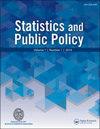Understanding Our Markov Chain Significance Test: A Reply to Cho and Rubinstein-Salzedo
IF 1.5
Q2 SOCIAL SCIENCES, MATHEMATICAL METHODS
引用次数: 4
Abstract
Abstract The article of Cho and Rubinstein-Salzedo seeks to cast doubt on our previous paper, which described a rigorous statistical test which can be applied to reversible Markov chains. In particular, Cho and Rubinstein-Salzedo seem to suggest that the test we describe might not be a reliable indicator of gerrymandering, when the test is applied to certain redistricting Markov chains. However, the examples constructed by Cho and Rubinstein-Salzedo in fact demonstrate a different point: that our test is not the same as another class of gerrymandering tests, which Cho and Rubinstein-Salzedo prefer. But we agree and emphasized this very distinction in our original paper. In this reply, we reply to the criticisms of Cho and Rubinstein-Salzedo, and discuss, more generally, the advantages of the various tests available in the context of detecting gerrymandering of political districtings.理解我们的马尔可夫链显著性检验:对Cho和Rubinstein-Salzedo的答复
摘要Cho和Rubinstein Salzedo的文章试图对我们之前的论文提出质疑,该论文描述了一种可以应用于可逆马尔可夫链的严格统计检验。特别是,Cho和Rubinstein Salzedo似乎认为,当测试应用于某些重新划分选区的马尔可夫链时,我们描述的测试可能不是不公正选区划分的可靠指标。然而,Cho和Rubinstein Salzedo构建的例子实际上证明了一个不同的观点:我们的测试与Cho和鲁宾斯坦Salzedo更喜欢的另一类选区划分不公测试不同。但我们同意这一点,并在我们的原始文件中强调了这一区别。在本回复中,我们回应了赵和鲁宾斯坦·萨尔泽多的批评,并更广泛地讨论了在检测政治选区划分不公的背景下可用的各种测试的优势。
本文章由计算机程序翻译,如有差异,请以英文原文为准。
求助全文
约1分钟内获得全文
求助全文
来源期刊

Statistics and Public Policy
SOCIAL SCIENCES, MATHEMATICAL METHODS-
CiteScore
3.20
自引率
6.20%
发文量
13
审稿时长
32 weeks
 求助内容:
求助内容: 应助结果提醒方式:
应助结果提醒方式:


